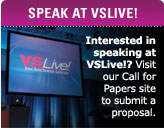Smart Client Live! Sessions
Client/Server Communication Options
Rockford Lhotka, Magenic Technologies
Many of us need to choose a client/server communication technology for our current development. How do you choose between Web services, WSE, Enterprise Services, Remoting, DCOM and MSMQ? What does WCF (Indigo) mean to you, and how can you plan ahead to smooth the transition? In this session you’ll learn the strengths and weaknesses of each option in terms of their use today, and their migration to WCF in the future. If you are developing n-tier client/server systems this session is a must!
Building .NET Solutions for Word and Excel 2003 using Visual Studio 2005 Tools for Office
Ken Getz, MCW Technologies
Interested in including the power of Word and Excel into your .NET applications? Incorporating Office capabilities into applications using the Word and Excel object models is often a challenge for .NET developers. Visual Studio Tools 2005 for the Microsoft Office System now provides Host controls that allow developers to use some native Word 2003 and Excel 2003 objects as standard .NET controls. In this session, we'll look at how you can incorporate data binding, the new Document Actions Pane and Smart Tags into your Office solutions. We will then build on these concepts to demonstrate how Host controls enable you to create Office smart client applications quickly and easily.
Keeping Secrets in .NET Applications
Paul Sheriff, PDSA, Inc.
Cryptography is one of those areas most developers think as a "dark art". In this session you will see how easy it is to use Cryptography to secure data such as credit card numbers, passwords, and connection strings. You will learn how to hash passwords using a Salt value to make it hard for hackers to crack. You will also learn how to use the Symmetric algorithms to encrypt and decrypt connection strings. You will see how .NET 2.0 has incorporated various tools to help you encrypt connection strings within your config files.
Plugging .NET Framework Gaps with WMI
Ken Getz, MCW Technologies
WMI (Windows Management Instrumentation) makes it possible for the .NET Framework to expose details of your operating system, hardware, and devices without needing to write specific-case code. In addition, WMI provides an open door for you to investigate and manipulate hardware and operating system details that aren't otherwise available to you through the .NET Framework. Want to rid yourself of unwanted API calls? WMI can often supply the answer, using a managed wrapper around the Windows infrastructure. In this session, you'll learn how to take advantage of WMI to solve many common problems facing .NET developers.
Data Access Strategies and Tactics
Jackie Goldstein, Renaissance Computer Systems
This session presents alternatives and considerations for developing the data access portions of your applications, including numerous techniques for passing data through the tiers of you application. The pros and cons of such common approaches such as Datasets, XML, custom classes, and scalar values will be demoed and evaluated. The techniques described in this session are based on the best practices defined by Microsoft. The principles discussed here apply to VS 2003 as well as VS 2005 (and even other platforms!)
Avalon: Vector Graphics Come Alive 
Walt Ritscher, Scandiasoft
The next version of Windows (Windows Vista) will include a completely new graphics engine. This engine, Windows Presentation Foundation (WPF), will change the way you think about user interfaces. WPF (formerly called Avalon), soon to be retro-fitted onto Windows XP and Windows 2003, is a major shift in Windows graphics platform. Built, in part, on a new vector API, WPF blends traditional two-dimensional and three-dimensional systems, transparencies, animation, integrated multi-media and more in a single unified managed code model. Join me to see how WPF is controlled through XAML (Extensible Application Markup Language) or via code. See how incredibly easy it is to create three dimensional applications (including controlling lights, camera and sprites). Examine the significant advances in color, printing, remoting, and audio processing that are included. Immense changes are coming. Be among the first to see what the WPF engine can do.
Requirements Patterns with VSTS 
Martin Shoemaker, Richard Hale Shaw Group
Some projects use VB .NET, while others use C#, Managed C++, or may be a mix. Some projects are Web-based, while others run on a desktop or in a console. But no matter how they may differ, all projects are the same in one regard: they all have requirements. And so requirements definition and management should be at the core of any good process. In this session, we’ll learn how VSTS helps you to define, store, track, and report requirements. And we’ll also learn some simple yet powerful requirements patterns that you can apply to most projects and processes.
Building in Manageability
Keith Pleas, Guided Design
Accurate instrumentation enables organizations to better plan deployments and perform accurate capacity planning, failure analysis, operations health monitoring, and service-level-agreements (SLAs). This session illustrates an approach for building in application-wide instrumentation and control.
Best Practices for Testing and Debugging Managed Code:
VS 2005 & VSTS 
Richard Hale Shaw, Richard Hale Shaw Group
Testing and debugging aren't programming per se: they're separate, but complimentary skills that every programmer should grow, but often don't. Where programming entails actively asserting your will on the software, testing simply specifies what the result of an operation should be, and that without that result, the test fails. Debugging is neither: it focuses us on what is-not on what should be. Knowing how to effectively develop and apply these skills is critical to every software developer's future. Fortunately, Visual Studio 2005 has a plethora of new debugging features that make Debugging simpler, more straight-forward, and even elegant. And Visual Studio Team System Dev Edition now features built-in Unit Testing system for defining Unit tests before you start programming, and re-run your tests whenever you wish. In this session, Richard will show you how to leverage the maximum results when testing and debugging Managed Code.
.NET Worst Practices: What's Wrong with This Code?!
Jackie Goldstein, Renaissance Computer Systems
The goal of this session is to show you that writing code that is syntactically correct is just the beginning of writing good VB or C# .NET code. This session is made up of a series of code real snippets that have either bugs, performance issues, or best practice violations. For each snippet, we will disclose the problem and explain how to avoid the issue. Samples will include both VB and C# code.
Basics of Control Creation with WPF
Billy Hollis, DotNetMasters
An introduction to creating visual controls using Windows Presentation Framework. Topics include making controls data-friendly, tips for handling visual cosmetics and positioning, and how to make controls work well with the visual designer.
TableAdapters 101
Paul Sheriff, PDSA, Inc.
The new TableAdapters in VS .NET 2005 are a great way to create type-safe access to your tables and promote good object reuse. In this seminar you will be given a great overview of how to use these new classes in your .NET 2.0 applications.
Smart Data for Windows Forms
Rockford Lhotka, Magenic Technologies
Windows Forms 2.0 takes data binding to a new level. In this session you will learn how to leverage data binding to keep virtually all business logic out of the UI and in its own business layer. You will learn how to give intelligence to DataTable objects in ADO.NET 2.0 and how to create business objects following object-oriented design. In the end you’ll be able to choose between the DataSet and business object options to best meet the needs of your application.
Exploiting System.Transactions and ADO.NET 2.0
John Papa, ASPSOFT
The.NET Framework v2 includes the System.Transactions namespace that enhances transactional support for managed code. In this session, I will discuss how System.Transactions can handle transactions without using other common practices such as deriving from a ServicedComponent, using interception, or using reflection. Designed to integrate with SQL Server 2005, System.Transactions supports the intelligent and automatic promotion of local lightweight transactions to fully distributed transactions. It also introduces a new class called LightweightTransactionManager, which is a faster alternative to using the DTC for local transactions. Example will include modifying the default transactional settings of the implicit local transaction, the isolation level, timeout period and transaction’s context. I will also demonstrate how and when the System.Transactions namespace delegates the promotion of a lightweight transaction to a fully distributed transaction as well as how to use explicit transactions, and manually choose when and if to enlist in a transaction context.
Leveraging .NET 2.0 Security Features 
Robert Hurlbut, Hurlbut Consulting
Security is difficult to get right, and it is a good strategy to leverage code provided by the upcoming changes in .NET 2.0. The new security components in .NET 2.0 can help you greatly reduce the amount of code you need to write in order to make your applications secure. .NET 2.0 provides numerous additional types that encapsulate functionality already provided in the base Windows OS, as well as new functionality only available in .NET 2.0. This talk will cover the new improvements including public key cryptography, Windows security, remoting, SecureString, XML Encryption, ASP.NET and Code Access Security.
Databinding Tasks in Windows Forms
Robert Green, MCW Technologies
How do you get data into and out of a form? How do you add and remove rows? How do you move from row to row? How do build one-to-many forms? How do you make sure that child rows are removed before parent rows and that parent rows are added before child rows? How do you populate controls with lookup data? How do you know what row you are on in the underlying data? How do you filter and sort data? How do you handle read-only fields, null values or auto-increment columns? How do you set up default values? How and where do you validate data? This session will focus on how you handle typical data scenarios in Visual Studio 2005 using Windows Forms and ADO.NET.
Advanced Object Binding Techniques
Deborah Kurata, InStep Technologies
Object binding binds to your code allowing you more control over how your Windows Forms user interface binds to your business objects. But with that control comes responsibility. You are then responsible for handling validation in your business objects and for cleanly reporting errors to the user interface. This session covers how to develop a standard Validation class, perform the validation in your business objects, and build a base business object class to manage the validation and display of data entry errors.
New Debugging Features for Visual Studio 2005
Johnathan Goodyear, ASPSOFT
Experience a whirlwind tour of the new and exciting debugging features that Visual Studio 2005 offers. Some of the topics that we will cover are Visualizers, Type Proxies, Tracepoints, Data Tips, Object Identities, Just My Code Debugging and Edit-and-Continue. Get ready to supercharge your debugging skills in this code-packed presentation.




